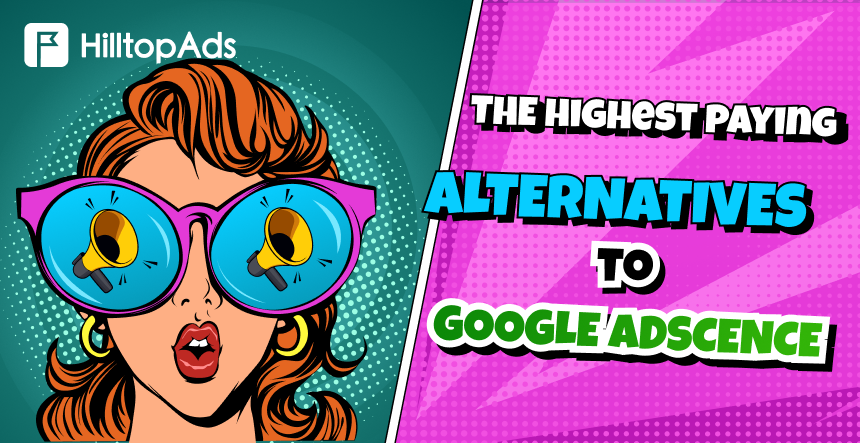Publishers, website owners, and digital marketers often seek out AdSense alternatives when Google’s own ad platform isn’t meeting their needs. Many publishers struggle with low ad earnings, strict content policies, or minimal support on this service.
It’s no wonder they look for better than AdSense options to boost income, avoid account bans, and diversify their monetization strategy. In this article we will dive into these critical challenges and provide a comprehensive guide to AdSense alternatives.
Before exploring AdSense alternatives, what is Google AdSense?
Google AdSense is an ad program launched in 2003 that allows publishers to earn money by displaying targeted ads. It became one of the most popular monetization methods, growing to over 2 million publishers in its first decade and sharing billions in ad revenue.
Nowadays, Google AdSense dominates online advertising with a 71.22% market share. AdSense requires user-friendly websites, typically six months old, with original, high-quality content and organic traffic.
The platform supports various ad formats, including traditional banner ads, display ads, responsive ads, native in-feed ads, and video ads. AdSense automatically selects ads in real time from a million offers according to the content and audience of your website.
AdSense requires publishers to have original, family-friendly content (no adult, gambling, or outlaw material) and adhere to Google’s guidelines (e.g., not artificially inflating clicks). In exchange, publishers typically receive 68% of the ad revenue, while Google keeps a 32% share as the ad network intermediary.
Add your website and start earning today!
Get the highest CPM rates with payouts every Tuesday
When is it time to start looking for AdSense alternatives?
Even if AdSense is easy to start with, there are several scenarios when a publisher should think about switching or adding other ad networks to their strategy:
Low earnings
If your AdSense revenue is lower than expected, the point might be in limited ad types and optimization. AdSense’s self-serve nature means publishers are responsible for optimizing their own placements.
Many alternatives provide higher payouts or help with optimization to boost your income. Some networks also take a smaller revenue cut (AdSense keeps 32% of earnings, while certain alternatives take as little as 20%) – letting you keep more profit.
Expert insight
One major myth is that AdSense alternatives always pay less. In reality, many publishers earn significantly more after switching, especially with advanced networks using AI and header bidding.
In addition, such algorithms are revolutionizing ad performance through automated bidding strategies, responsive ad creation, and incredibly precise AI-based targeting.
This means more relevant ads for users, leading to higher engagement, maximized conversions, and ultimately, better ROI for publishers.
Ad format limitations
AdSense mainly offers standard display and native ads. It doesn’t support more dynamic formats like popunders, direct links, or push notifications. If your monetization would benefit from those formats (e.g., a download website using popunders), an alternative network is needed.
Strict policies and account bans
Google’s policies are strict and complicated. Websites with content that “pushes the envelope” risk warnings or the account suspension. You can’t freely use interstitials, incentivize clicks, or place ads on certain content without consequences.
If you’ve ever had an AdSense publisher account disabled (commonly for invalid traffic or policy violations), you’ll need alternatives to continue earning. The same goes if you’re not approved by AdSense in the first place due to website content or low quality – some alternatives have more lenient approval.
Lack of support
AdSense provides very little hands-on support to publishers. If you value having an account manager or quicker help to troubleshoot issues and maximize revenue, alternative ad networks often excel in this area, offering personalized guidance and even custom optimizations.
Expert insight
Customer support is incredibly important for any publisher, mate. When you’re navigating a new platform or encounter an issue, responsive and knowledgeable support can save you time and money.
I’ve seen many instances where a dedicated account manager from an ad network helped a publisher optimise their ad setup, significantly increasing their earnings — something you rarely get from AdSense unless you’re a huge player.
Geography or vertical mismatch
AdSense works well for many, but it tends to favor certain geographies. Publishers with a lot of Tier-1 country traffic (e.g., US, UK) or very niche audiences sometimes find that specialized ad networks can outperform AdSense in those areas.
For example, some alternatives have advertisers willing to pay more for specific niches or non-standard ad placements. If your traffic is largely from regions or in verticals where AdSense yields a low CPM, it’s a good time to explore other options.
Too much reliance on one platform
Finally, even if AdSense is doing okay for you, think about the potential risk of putting all your eggs in one basket. A sudden policy change or algorithm update could hurt your earnings overnight.
Diversifying with additional ad partners ensures you’re not solely dependent on Google. Many publishers use AdSense alongside alternatives to maximize fill rates and revenue – it’s about finding the right balance.
Start monetizing your traffic on the best advertising network HilltopAds for publishers!
For these sites, AdSense alternatives just work better!
AdSense isn’t an option for every publisher and any website. Google bans certain categories from its network due to content restrictions, so if your website falls into any of these niches, you should look at AdSense alternatives from day one:
Adult content websites
AdSense is strictly family-friendly, meaning no non-mainstream material is allowed. Adult entertainment websites instead turn to specialized ad networks to monetize via banners, video ads, or popunders that cater to 18+ content.
Piracy, warez, or torrent websites
Have a website offering movie streams, torrent links, or “grey area” downloads? Google’s policies forbid monetizing copyrighted content and piracy facilitation.
Alternatives such as popunder ad networks or direct download affiliate programs are commonly used among publishers here. These platforms will accept file-sharing or streaming websites and serve ads that AdSense never would.
iGaming or other regulated content
AdSense has strict rules against online casinos, sports betting tips, unregulated supplements, and more. However, there are niche ad networks and affiliate programs that work with these topics.
For example, gambling websites might join networks specializing in betting ads, and CBD blogs might use affiliate ads since AdSense won’t run on their content.
ites with excessive profanity or “edgy” UGC
Google expects a “clean” content environment. If your community forum, meme page, or comment sections are full of bad language or rude humor, you run the risk of Google disabling ads.
Some alternative networks are more tolerant of edgy content (within legal bounds) and won’t penalize you as strictly, making them a better fit culturally and financially.
In short, if your website can’t get into AdSense due to the content you host, don’t despair. Many ad networks operate in these banned niches, and some are very lucrative.
Just be sure to choose a reputable alternative that won’t flood your users with malware. When AdSense says “no,” there’s always another ad platform ready to say “yes” to your traffic.
Key things to know before selecting the best AdSense alternative
Not all ad networks are created equal. Before you jump into an AdSense alternative, pay attention to these key factors to find the best fit for your website:
| Factor | Why does it matter? | Key considerations for publishers |
| Traffic quality and source | Ensures compatibility with existing traffic (organic, social, paid) and audience demographics (GEOs, device types). | Does the platform specialize in your traffic type? Are your primary GEOs supported and valued? |
| Minimum requirements | Determines acceptance; some networks cater to small websites, others demand high volumes. | Does your current traffic volume meet the minimum threshold? Is there room for growth within their tiers? |
| Payment terms and methods | Directly impacts cash flow and financial stability. Includes minimum payout, frequency, and methods. | What is the minimum payout? How often are payments made? Are preferred payment methods available? |
| Ad format compatibility | Influences user experience, engagement, and revenue potential. | Are the ad formats suitable for your website’s design and audience? Do they offer formats AdSense prohibits? |
| Ad safety | Protects website reputation and user experience from malicious or intrusive ads. | What are the network’s content policies for publishers? Are there strong anti-fraud measures in place? |
| Personal support and customization | Facilitates troubleshooting, optimization, and seamless ad integration. | Is dedicated support available? Can ad placements and appearance be customized to your liking? |
| Market feedback | Provides real-world insights into platform reliability and publisher satisfaction. | What do other publishers say about their experience (e.g., Trustpilot, G2 ratings)? Are there recurring complaints or praises? |
One more tip: ensure your website itself is ready for a new ad network. Almost all reputable AdSense alternatives still require original, quality content and legitimate traffic. If AdSense rejected you for poor content or policy violations, an alternative network isn’t a magic fix — you’ll need to address those underlying issues.
Expert insight
Publishers with smaller websites should focus on networks that have no minimum traffic requirements, because they offer flexible ad formats and fast approvals.
Such platforms also focus on innovative units such as native ads, push notifications, and contextual placements that can help maximize revenue even with modest traffic. Consistently optimizing content and ad layouts also boosts earnings potential.

Add your website and earn today as never before this!
You can start making money even with a small website.
20 best AdSense alternatives you need to try in 2025: its pros&cons, requirements, reviews
Now, let’s dive into the top AdSense alternative platforms available for publishers in 2025. Each of these networks has a unique set of terms and benefits that might make it a better fit for your website according to its content, traffic, niche, and monetization strategy.
HilltopAds
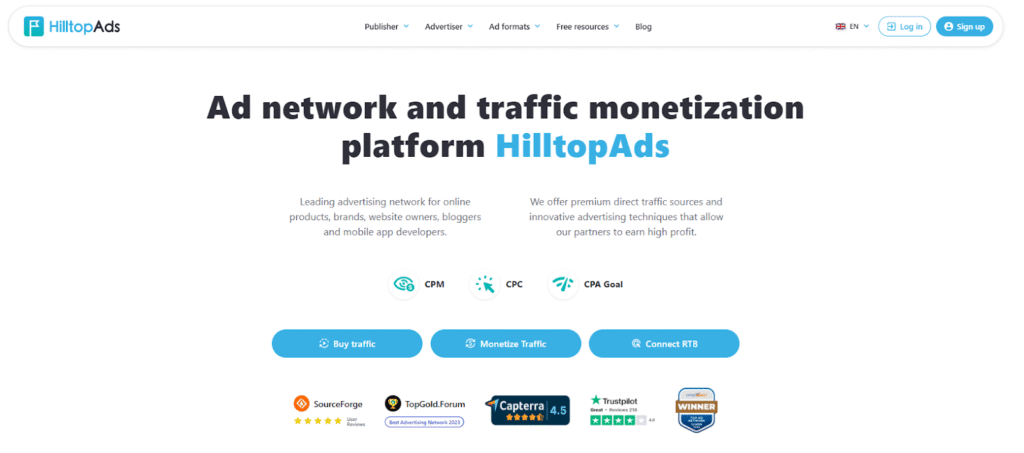
HilltopAds is one of the best adsense alternatives with the highest CPM rates for websites, mobile apps, social traffic. HilltopAds offers innovative ad techniques for publishers like robust anti-AdBlock solutions and weekly payouts with minimum transaction commission.
It has no explicit minimum traffic requirement and supports popunders, in-page ads, banners, and video formats. Minimum payouts start at $20 (Wise, Paxum, Webmoney, Capitalist).
Friendly qualified support available 24/7, high rates, and openness to iGaming and non-mainstream traffic will additionally streamline publisher’s advertising workflow. Trustpilot: 3.6/5.
Taboola
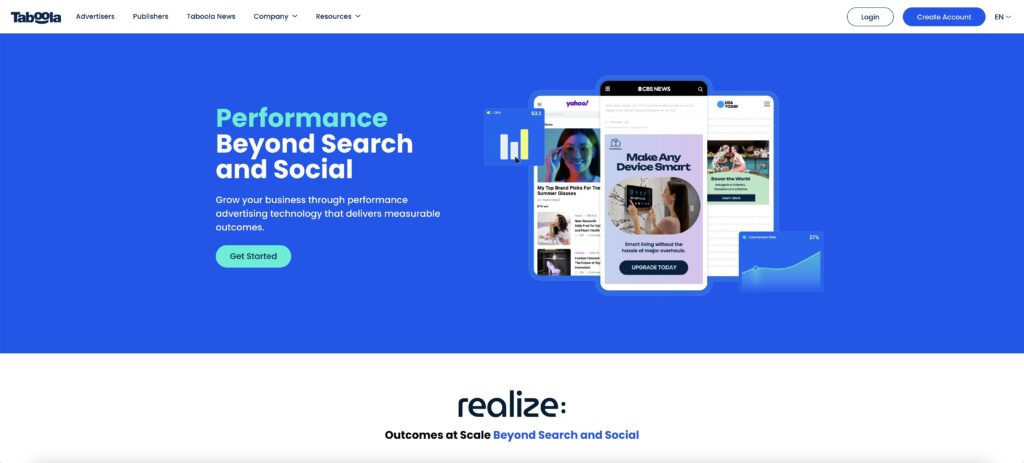
Taboola is a leading native ad network for over 9,000 digital publishers specializing in content recommendations. It requires adhering to the necessary content and partnership policies, like transparency and clarity.
Taboola also sticks to brand safety – complying with TAG and ads.txt – and offers keyword filters and blocking tools, plus user-controlled content filters. Ad formats include vertical, motion, carousel, and display. Trustpilot: 2.5/5.
Outbrain
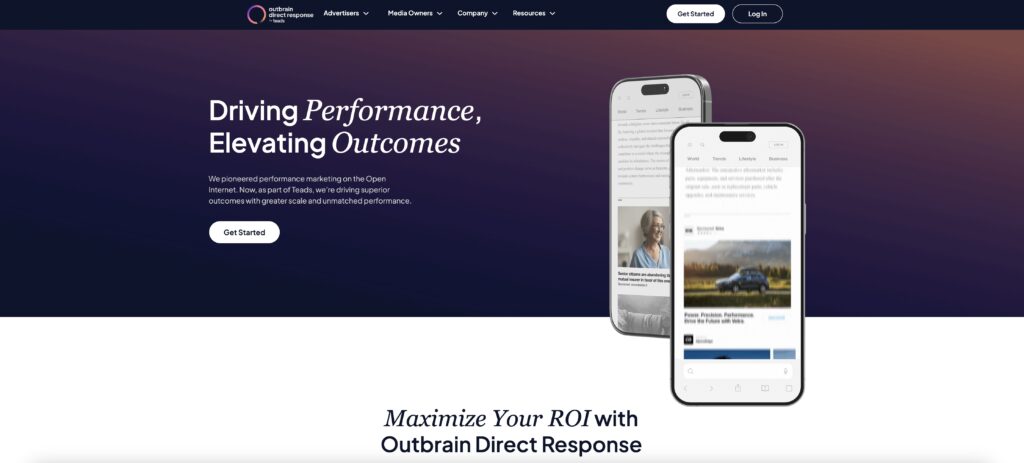
Outbrain is a major native and contextual ad platform delivering billions of content recommendations. Publishers must ensure that their traffic source complies with industry best practices, is human-driven, and authentic.
Ad formats include recommended widgets, in-feed, in-article, and video ads. It operates on a CPC model with a $50 minimum payout once a month. Trustpilot: 1.3/5.
Media.net
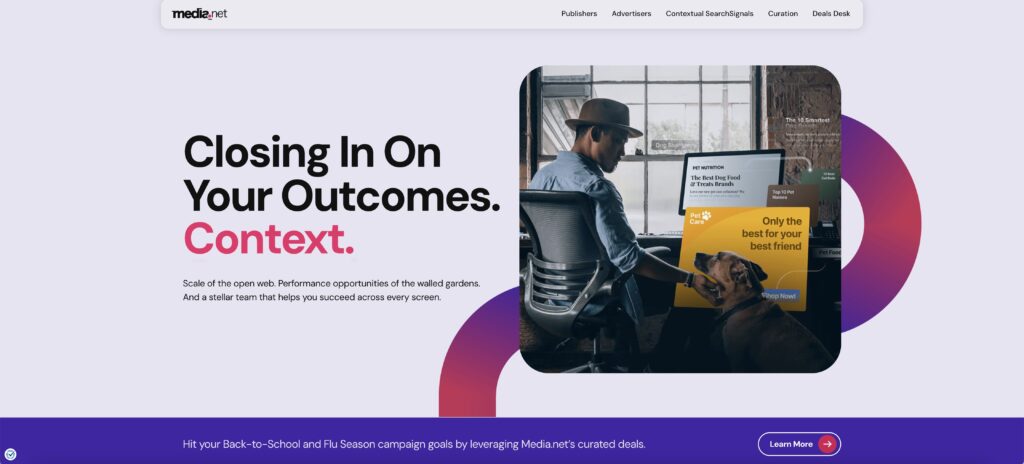
Media.net is the world’s second-largest contextual ad network, known among publishers for high-quality ads. It primarily supports English-language websites with original content and ideally 50,000+ monthly views, especially from the US, Canada, and UK.
Ad formats include display, native, and video. Minimum payout is $100, processed every 30 days via wire transfer or Payoneer. Trustpilot: 2.3/5.
Advertica (ex ylliX)
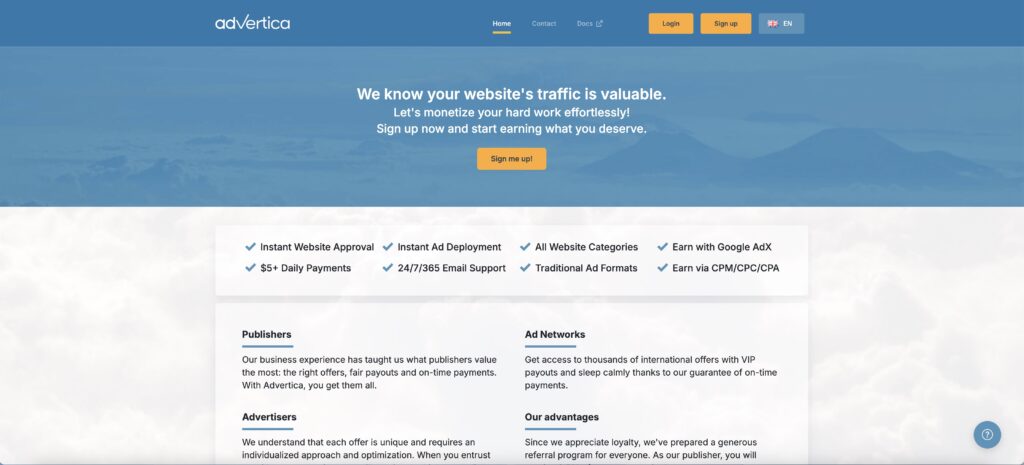
Advertica (ex ylliX) is a fast-growing ad network known for its accessible sign-up process and no minimum traffic requirement. It is more permissive with content, allowing adult and gambling niches if specified, though illegal material is prohibited.
Advertica operates on CPM, CPC, and CPA models, offering daily payments and fair payouts based on traffic quality. Trustpilot: 1.6/5.
BuySellAds
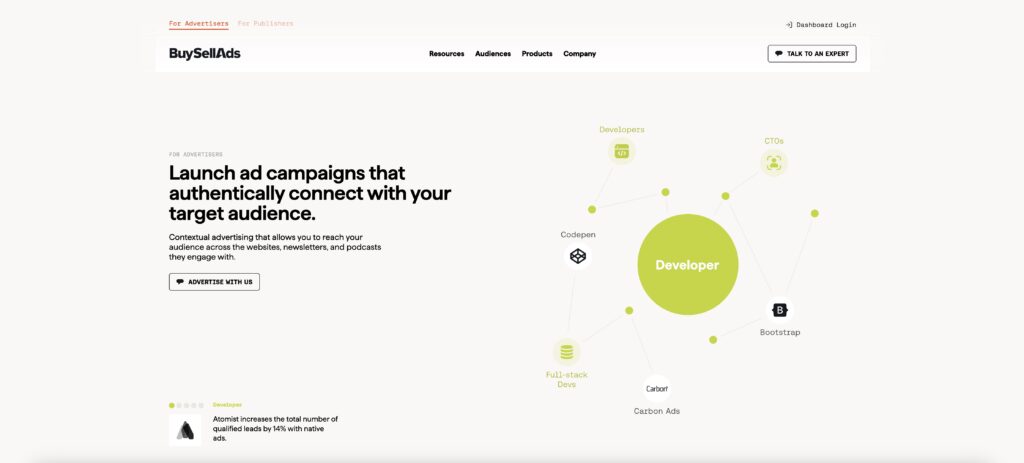
BuySellAds facilitates direct ad sales and sponsorships, allowing publishers to set their own rates. Publishers must be 18+, install ad serving code, and approve/deny ads. Supported formats include email, native, sponsored content, display, and podcast ads.
BuySellAds takes a 25% commission, with earned funds appearing approximately 30 days after purchase. The minimum payout starts from $20, an inactive account fee of $100/month applies after six months. Trustpilot: 4.2/5.
Ezoic
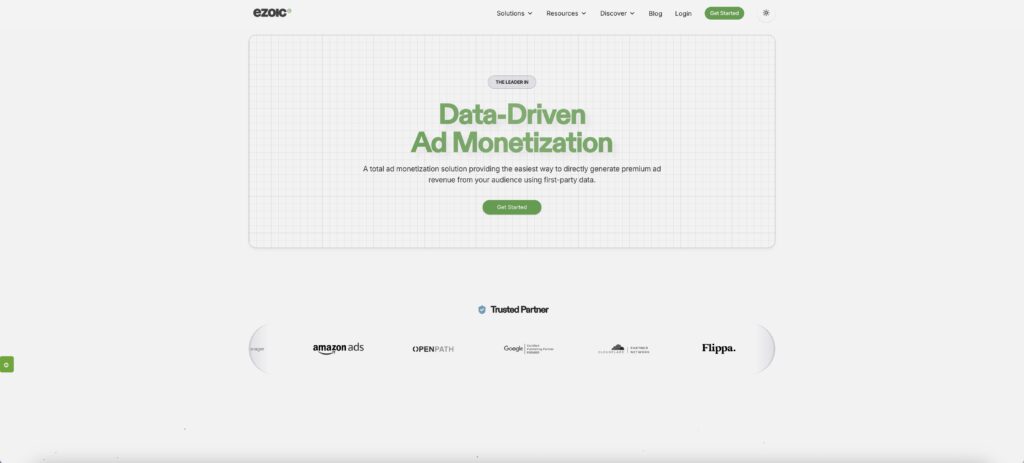
Ezoic is an AI-driven platform optimizing ad and layout for revenue and user experience. It has removed previous pageview limits, but websites must comply with Google’s policies (e.g., no invalid clicks).
Ezoic supports display, video, native, and interstitial ads. A minimum payout for publishers is $20, typically paid ~35 days after month-end. As a Google Certified Publishing Partner, it’s Google-approved. Trustpilot: 3.1/5.
RevContent
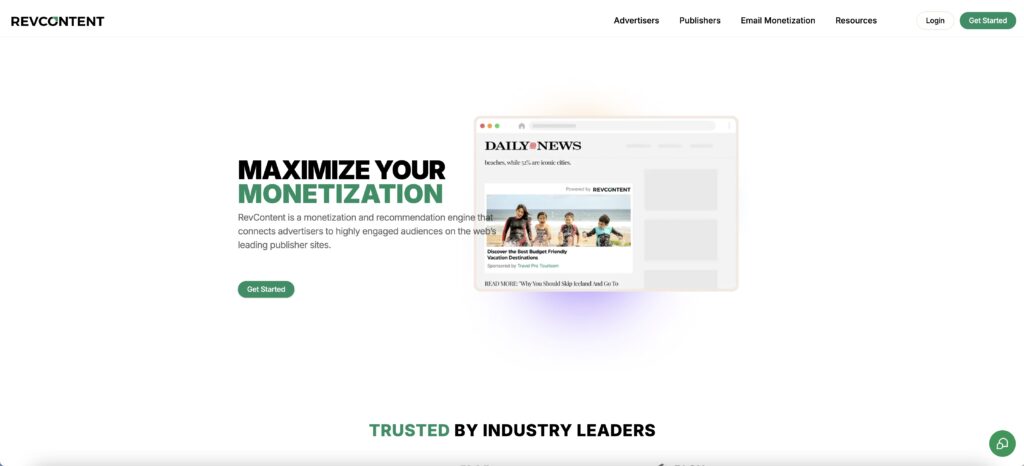
RevContent is a prominent native ad network with 250 billion+ monthly content recommendations, advanced ML-algorithms and robust anti-fraud system.
There is no minimum page view or traffic requirement; publishers must only provide original, high-quality traffic that follows the content guidelines provided by the platform.
Ad formats include in-feed, in-article, and recommended widgets. It operates on vCPM and CPC models, with a $50 minimum payout. Trustpilot: 3.2/5.
Infolinks
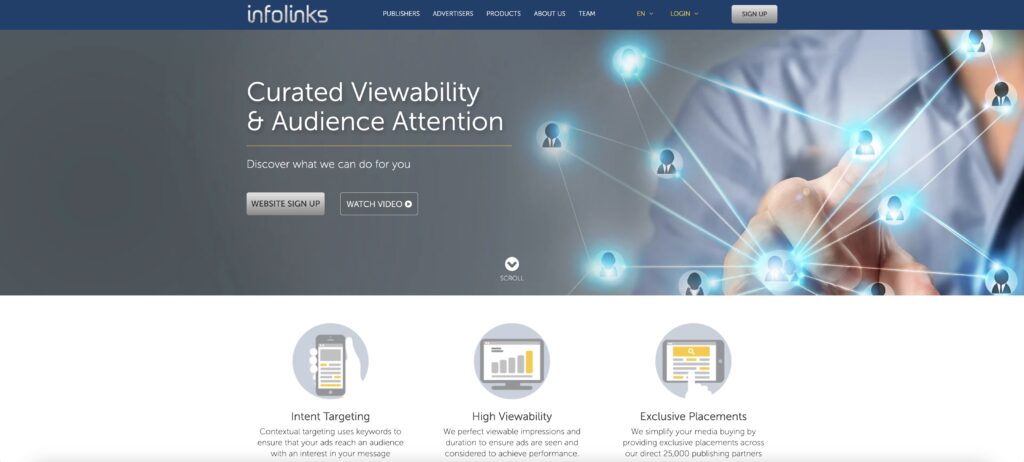
Infolinks specializes in intent-driven advertising with unique, non-intrusive ad formats designed to blend with content. Publishers must have approved websites, be 18+, and avoid negative content like violence and illegal activities.
Formats include in-text, in-frame, in-article, and in-fold units. It operates on a revenue share model with a $50 minimum payout, typically paid on the first day of the month. Infolinks can work alongside other ad networks. Trustpilot: 4.6/5.
PubLift
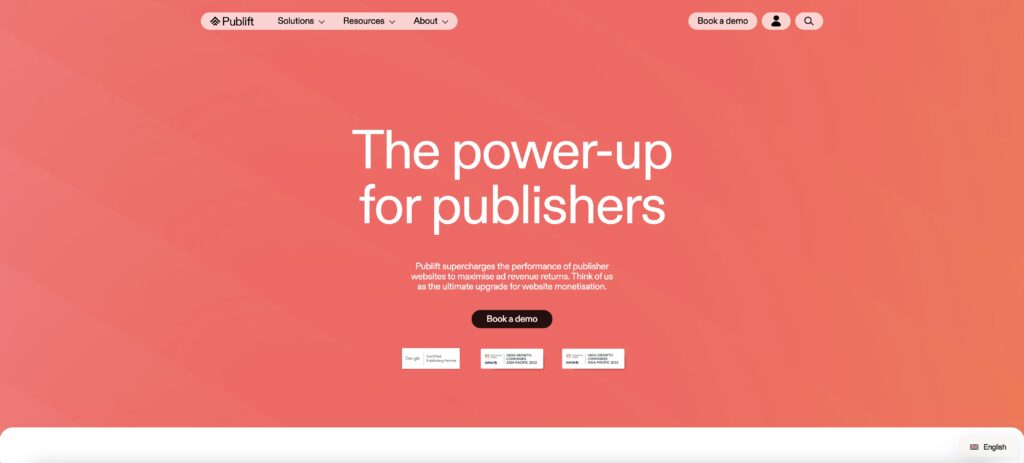
Publift, a Google-certified publishing partner, helps publishers access premium ad partners and optimize revenue. Requirements include 500,000+ monthly page views showing loyal and engaged users or $2,000+ monthly ad revenue.
Publift operates on an 80% publisher revenue share model, with a $100 minimum payout. Noted for no lock-in contracts and an average 50% revenue uplift. Trustpilot: 4.6/5.
Monumetric
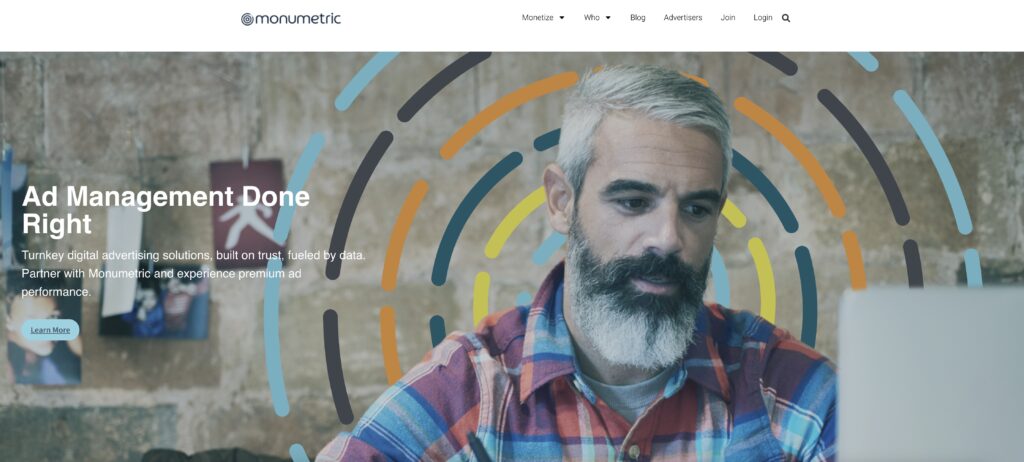
Monumetric is a premium ad network offering personalized ad optimization, best for small to medium-sized publishers. Its Propel Program requires 10,000+ pageviews and a $99 setup fee.
Monumetric utilizes various ad formats, including client-side header bidding, direct deals, pre-bid enabled video ads and in-image/in-line ads. It has a $10 payment threshold for US publishers. The platform claims to deliver a 30-400% revenue increase. Trustpilot: 2.6/5.
Criteo
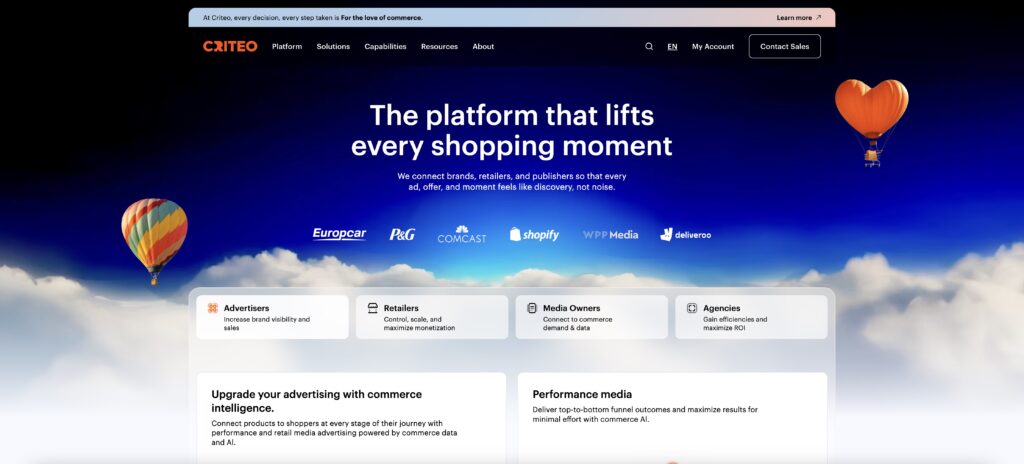
Criteo is a global commerce media company emphasizing ethical standards and compliance with data protection laws. It aims to build a trustworthy advertising ecosystem, offering transparency, protecting data assets, and simplifying transactions.
Criteo offers publishers display, in-app, web, mobile, native, video, and CTV formats, while avoiding pop-ups or auto-play audio. The affiliate network provides payouts starting from $25. Trustpilot: 1.5/5.
Mediavine
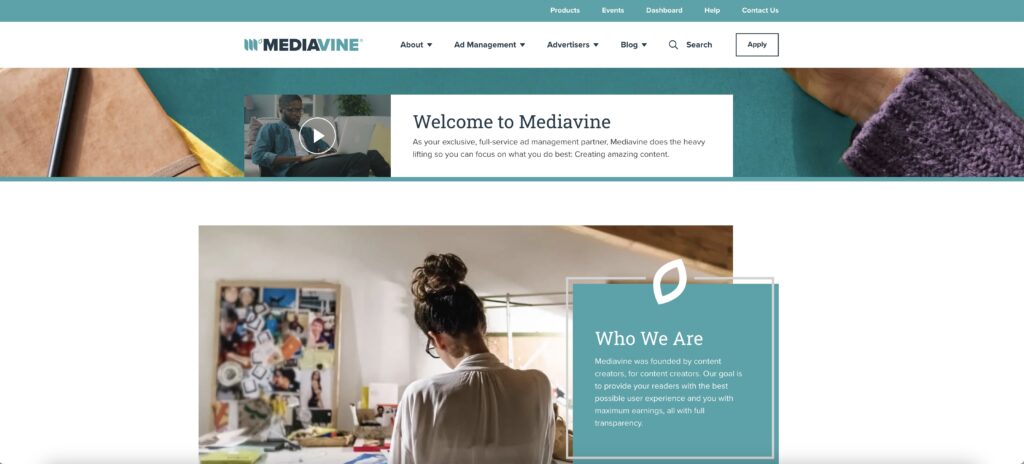
Mediavine is a leading ad platform promising higher revenue than AdSense, emphasizing quality content and user experience. Publishers need 50,000 monthly sessions and must have original, engaging content with clean, organic traffic. Mediavine primarily focuses on display ads (adhesion, sidebar, in-content).
The minimum payout is $25, disbursed on the 5th of each month via PayPal or direct deposit. As a Google Certified Publisher Partner, it offers automatic optimization and advanced analytics. Trustpilot: 2.5/5.
Adsterra
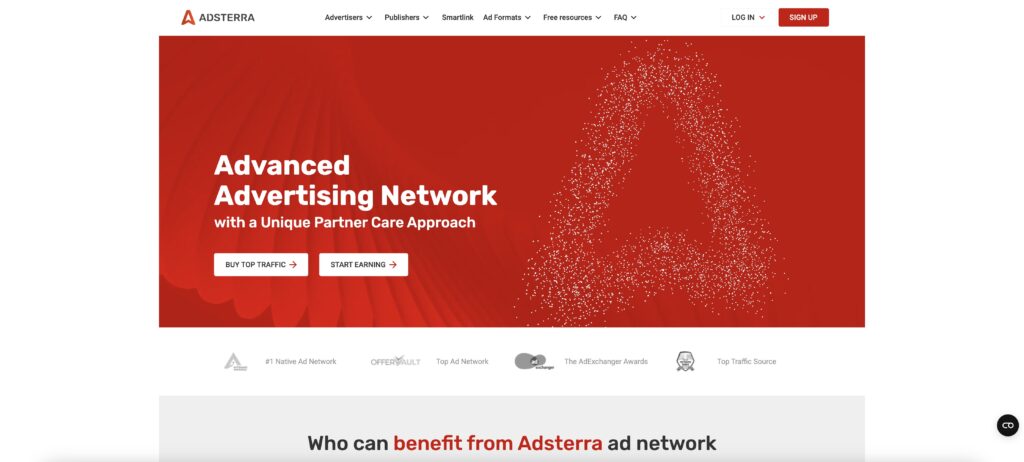
Adsterra, established in 2013, is a popular ad network known for unique formats and quality service. It accepts publishers with small websites with no general traffic restrictions.
Adsterra offers popunder, social bars, direct links, native banners, and traditional banners. Minimum payouts range from $5 to $1000, with biweekly payments. It provides 24/7 support and anti-AdBlock solutions. Trustpilot: 3.8/5.
Monetag
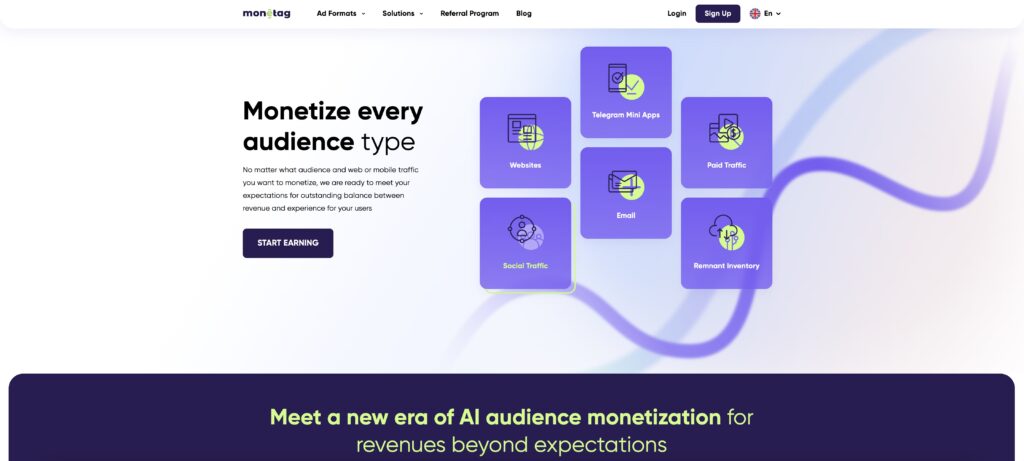
Monetag is a monetization platform leveraging AI-enhanced ad formats for revenue optimization. It aims to monetize “audience type” and various traffic sources, including websites, social traffic, and Telegram Mini Apps.
Monetag offers six formats: popunder, push notifications, vignette banner, in-page push ads, interstitial, and SmartLink, compatible with AdSense and including Anti-AdBlock. It provides publishers with weekly payouts and a low $5 minimum withdrawal via multiple methods like PayPal and Bank Transfer. Trustpilot: 3.7/5.
Setupad

Setupad is a Google Certified Publishing Partner and Prebid member offering advanced header bidding solutions. It supports banner, video, and native ads, including stickies, anchor ads, and AMP ads.
The minimum payout is €100, with the first payment after 60 days, then every 30 days. Setupad guarantees a 30-300% revenue increase, integrates with 15+ SSPs, and offers AdBlock Monetization. Trustpilot: 2.2/5.
Raptive
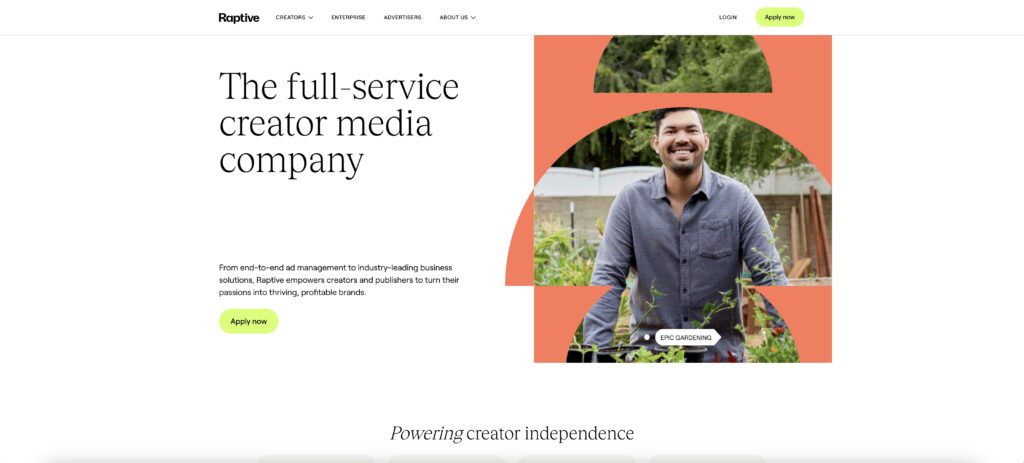
Raptive, a Google Certified Publishing Partner, focuses on maximizing publisher revenue and user experience. Raptive offers custom ad layouts and free video hosting, explicitly avoiding ads like pop-ups. Ad placements include header ads, sidebar ads, sticky sidebar ads, etc.
Among the ad formats you can choose are interscrollers, native ads, interstitials, and more. The minimum payout here is $25 for all payment methods, with the exception of the wire transfer option with its $100 minimum threshold for most countries. Raptive guarantees higher RPMs (revenue per mille) and provides a custom ad strategy. Trustpilot: 2.9/5.
SHE Media
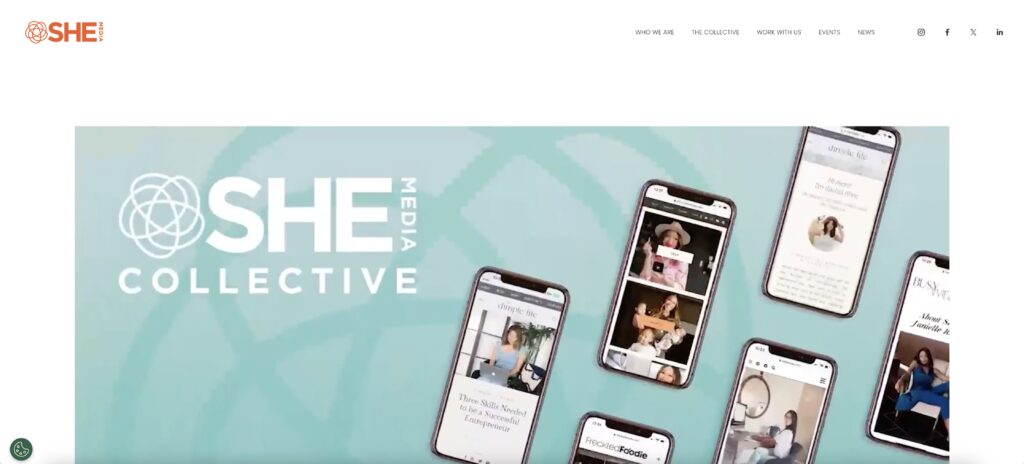
SHE Media is a collective for women content creators, offering full-service ad management and monetization. Publishers generally need 20,000+ monthly page views, consistent high-quality content, and a good Google track record.
It requires exclusivity for ad inventory and prefers US-based traffic. Ad formats include so-called beyond-the-banner combination: video, social, and native ads. Benefits include real-time insights & retargeting and a strong ad management platform.
PubMatic
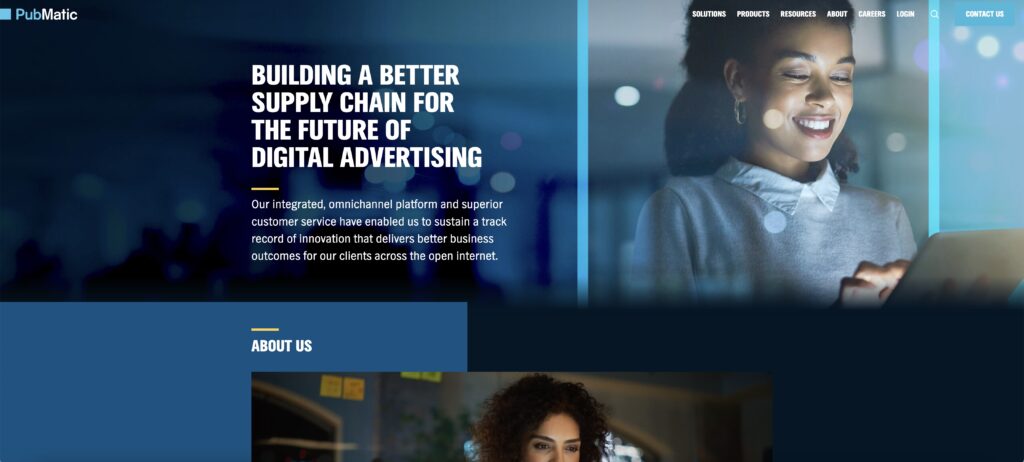
PubMatic is a sell-side platform (SSP) empowering publishers with unique demand and upholding transparency. Publishers must strictly comply with laws and content guidelines, having guaranteed timely payouts via 25+ payment systems, including cryptocurrencies.
PubMatic supports CTV, online video, mobile app, and web formats, offering RTB, PMP, and Openwrap solutions.
Snigel
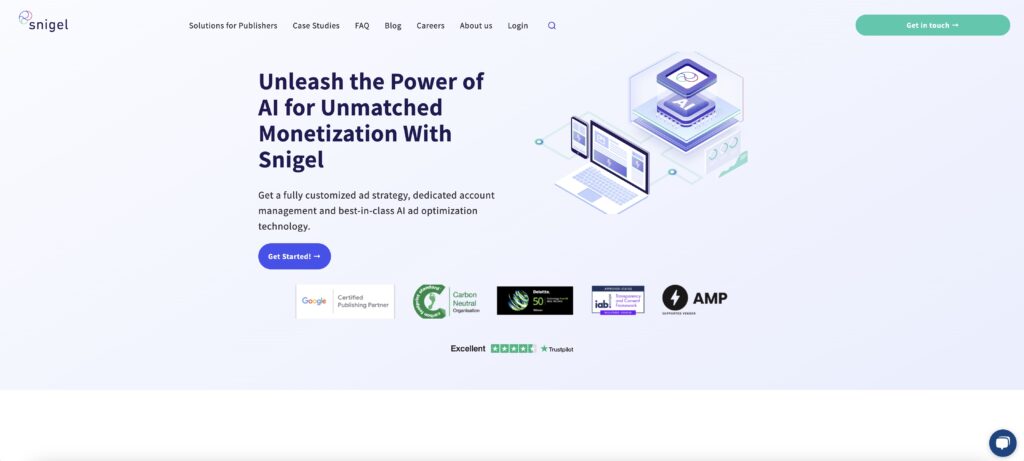
Snigel, a Google Certified Publishing Partner, helps publishers maximize revenue with custom ad strategies and AI-driven ad technology. It considers publishers earning $300/day from existing ads and works across any niche.
Snigel’s AdEngine offers various AI-powered formats like Adaptive ads, AdStream (native video), and Adblock revenue recovery. It operates on an 80/20 revenue share model with no contractual commitments. Publishers report an average 57% revenue increase.
HilltopAds vs AdSense: is it the highest-paying AdSense alternative?
When stacked against Google AdSense, HilltopAds makes a compelling case as one of the highest-paying alternatives in 2025. In fact, HilltopAds can be called a top solution for bloggers and publishers seeking better revenue, especially for traffic sources like social media that AdSense might not monetize well. There are a few areas where HilltopAds holds an advantage:
HilltopAds is one of the best Adsense alternatives! See for yourself!
- High CPM rates
- 24/7 support
- Personal Manager
- Multiple advertising formats
- Weekly payouts
Geographical performance
HilltopAds often yields higher eCPMs for Tier-1 traffic (US, UK, CA, etc.) compared to AdSense. While AdSense is strong in developing countries with its broad advertiser base, publishers with primarily Tier-1 audiences have reported better earnings with alternatives like HilltopAds that specialize in those regions. HilltopAds connects to advertisers willing to pay a premium for certain GEOs and niches.
HilltopAds is the top alternative for publishers who want to monetize website, social networks or mobile apps. More than 3000 publishers monetize traffic here every day and make huge money.
Behind these words are real cases of our partners, for example, one of the publishers earned $300K with manga-related website in just one year, and the other monetized his movie website for $38K in six months. Impressive, right? When it comes to social media monetization, there are equally remarkable cases like earning $100,000 with Twitter (X) in a year.
Ad formats & inventory monetization
AdSense limits you to fairly standard formats, but HilltopAds allows things like popunder, in-page, video, banner ads, or even their effective mix. Add there the ultimatum Direct Link format and you will get the strong monetization toolkit.
This means HilltopAds can monetize 100% of your inventory (including ads and formats AdSense would simply forbid). For example, one publisher leveraged HilltopAds’ popunder ads to earn $343k from non-mainstream website – income that wouldn’t exist under AdSense.
These real-world results underscore that with the right format on the right website, HilltopAds can dramatically out-earn AdSense.
Payment and support
AdSense pays monthly and offers no personal support for small publishers. HilltopAds, by contrast, provides weekly payments, which improves cash flow, and has account managers available for publishers.
For someone scaling their website, receiving weekly payments can be a game-changer (paying server bills, reinvesting in content faster, etc.), and having a network representative to optimize your setup is invaluable.
Strategies to monetize traffic with AdSense and alternatives
You don’t necessarily have to choose AdSense or others exclusively – many publishers use a combination of AdSense and alternative networks to maximize revenue. Here are some strategies to do this effectively:
Split by ad units or pages
You can run AdSense in some placements (for instance, a top banner and in-article ads) while using an alternative network in less prominent spots. This way, you diversify income streams on the same page.
Split by GEO or traffic type
If you find AdSense pays well for certain countries but poorly for others, consider using an ad management solution or script to serve AdSense to the strong geos and an alternative to the weaker geos.
Avoid policy conflicts
When mixing networks, ensure nothing violates Google’s policies. AdSense prohibits things like auto-redirect ads, popunders on the same website, and overly intrusive formats alongside their code. Always read policies or check with the network’s support if unsure.
Monitor user experience
Combining multiple ad sources can mistakenly lead to ad overload. Just because you can fill every inch of the screen with AdSense + native ads + popups doesn’t mean you should. It’s critical to maintain a balance so that users don’t get annoyed and bounce.
Use an ad manager or mediation
If juggling codes and conditions sounds complicated, consider using a mediation service or plugin. This way, you let technology allocate impressions to whichever source pays more.
Expert insight
Start with a hybrid approach. Don’t switch entirely – place AdSense on high-CTR units above the fold and test alternatives like Hilltopads or Media.net on below-fold positions. Monitor results for 30 days.
The data will speak for itself. Remember, diversification is key to sustainable revenue growth in today’s volatile ad ecosystem.
AdSense alternatives in 2025: closing thoughts
Google AdSense remains the default option for many newbies in the field, thanks to its ease of integration and broad advertiser pool. However, as digital advertising market grows, the need to diversify instruments and services in the publisher’s toolkit has become critical.
Relying solely on AdSense exposes you to account bans, strict content policies, and limited ad formats that may not align with every niche or traffic source. In 2025, publishers can choose from a wide array of alternatives – ranging from premium managed networks like Mediavine and Raptive, which deliver high RPMs for established, content-rich websites, to lighter-weight solutions like Adsterra and ylliX that welcome low-traffic or restricted-content publishers.
Many of these networks pay more quickly, allow formats AdSense prohibits (popunders, push notifications), and offer better support and customization. Among them, HilltopAds stands out for its weekly payouts, permissive approval (including adult-friendly options), and multiple high-yield ad formats.
By integrating the right mix of platforms – tailored to niche, geography, and content –publishers can optimize revenue, mitigate policy risk, and create a robust, sustainable monetization strategy for 2025 and beyond.


















